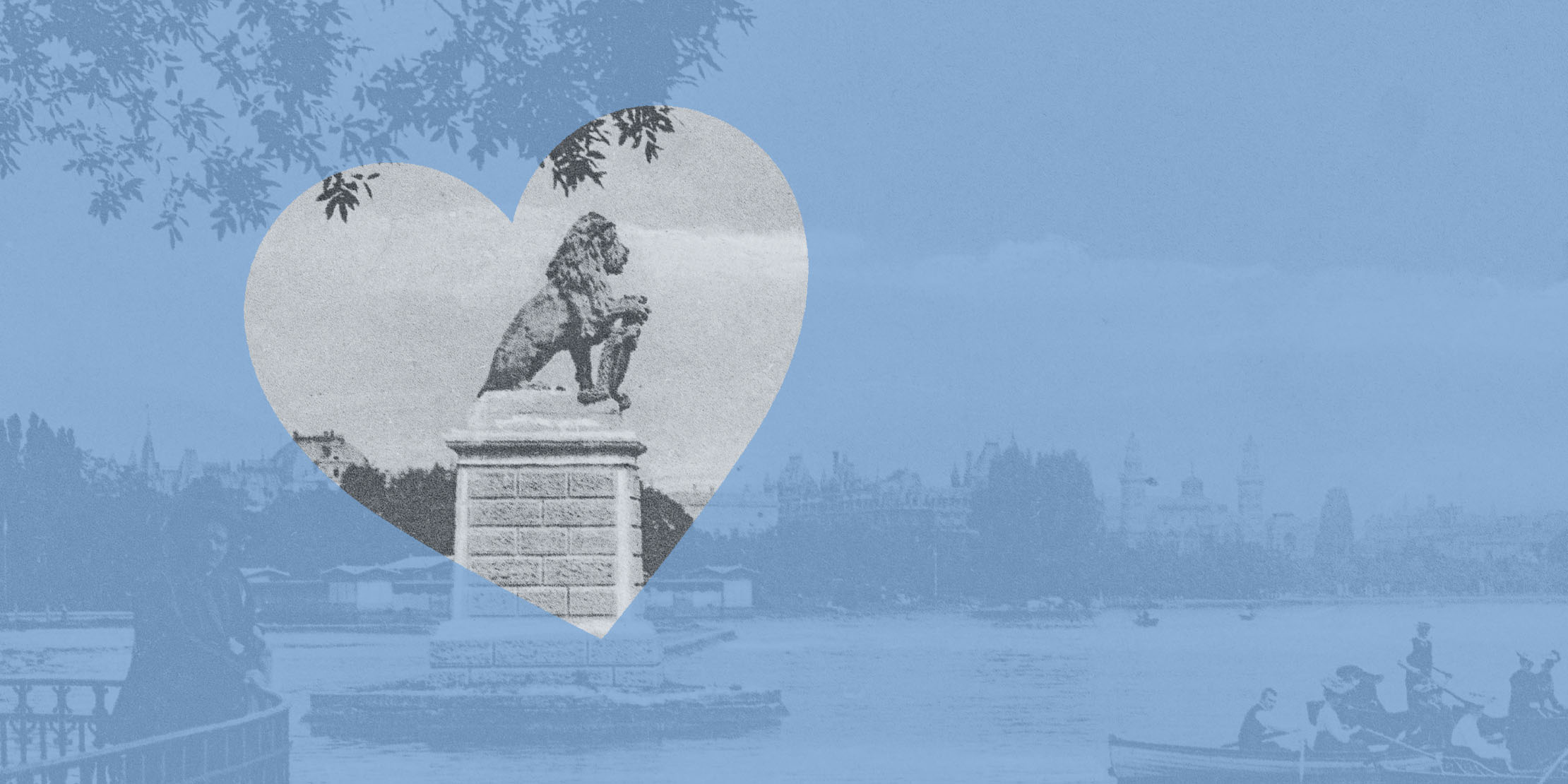
Zürich NEUerschienen
«Zürich NEUerschienen» presents newly acquired Turicensia – topical, recently published books, audiobooks and other media with a connection to the city and canton of Zurich.
Ermitteln in der Zürcher High Society

Juli 2024. Eve Klein fliegt nach Zürich, um herauszufinden, was krumm läuft in einer gemeinnützigen Stiftung, die ihr Chef kräftig mitfinanziert. Nebenbei etwas Geld für ihn waschen gehört ebenfalls zum Auftrag. Die Kronenhalle, der Chipperfield-Bau, das Dolder: Hin und wieder blitzt die Limmatstadt auf. Als Wohnort der oberen Oberschicht sind Zürich und ein namenloser Vorort stets präsent. Das Verbrechen und der Schauplatz werden in diesem Krimi aber beinahe zur Nebensache.
Denn die Ich-Erzählerin Eve Klein, die eigentlich anders heisst, lässt skurrile Zwillinge mit Plüschhaien lebendig werden, schildert Szenen einer Ehe und erzählt vor allem vom Milieu der Superreichen. Und wie sie erzählt. Der Roman hat das Tempo einer Road-Novel, packt mit wunderbar saloppen, authentisch klingenden Kurzdialogen und einer Erzählsprache, die ihresgleichen sucht.
Woher die Autorin Sybille Ruge ihr Wissen über Zürichs High Society nimmt, bleibt ihr Geheimnis. Wie viel der erzählten Welt erfunden und wie viel erlebt ist ebenfalls. Für die Leserinnen und Leser spielt es keine Rolle, die Geschichte funktioniert so oder so.
«9mm Cut» hat es auf die Krimibestenliste von Deutschlandfunk Kultur geschafft. Mit dem Vorgängerband «Davenport 160x90» heimste die Autorin zahlreiche Krimipreise ein. Bei uns im Bestand finden Sie beide Bücher, weitere Zürich-Krimis ebenfalls. Wir wünschen einen spannenden Lesesommer.
Schreibend reisen, reisend schreiben – Hugo Loetscher

Juni 2024. Hugo Loetschers Reise ging vor 15 Jahren zu Ende. Der Zürcher Schriftsteller und Publizist bereiste die Welt, insbesondere Lateinamerika, Nordamerika und Asien, um sie in Worte zu fassen. Auch seiner eigenen Stadt, in die er immer wieder zurückkehrt, begegnet er mit dem Text «Das Paradies des Boutiquismus» als Schreibender. In der «Kranzflechterin» und anderen literarischen Werken Loetschers spielt Zürich ebenfalls eine Rolle.
Dem Verhältnis des literarischen und journalistischen Schreibens geht der Autor mit dem Beitrag «Literatur und Journalismus» nach. Programmatisch leitet der Text den neuen Band «So wenig Buchstaben und so viel Welt» ein, der Reise-Essays und Reportagen von Hugo Loetscher aus sechs Jahrzehnten versammelt. Die Erscheinungsjahre, prominent bei den Titeln der einzelnen Beiträge platziert, erinnern daran, dass Loetschers Blick auf die Welt auch von der jeweiligen Zeit geprägt ist. Die Herausgeber Jeroen Dewulf und Peter Erismann haben ihn grösstenteils so belassen, wie er ist.
«So wenig Buchstaben und so viel Welt» ist beim Zürcher Diogenes Verlag erschienen, dem der Schriftsteller – nach den Anfängen beim Arche Verlag – bis zu seinem letzten Buch «War meine Zeit meine Zeit» treu blieb. Alle Werke von Hugo Loetscher sind bei uns ausleihbar. Mehr Informationen über ihn finden Sie in der Zürcher Bibliographie und der neuen Ausstellung im Strauhof.
Die Zürcher Konkreten

Mai 2024. Max Bill will mit der konkreten Kunst «den abstrakten Gedanken an sich mit rein künstlerischen Mitteln sichtbar» machen. Einige sprechen – ein bisschen sarkastisch, aber auch ein bisschen liebevoll – vom «Quadrätliklub», wenn sie die Zürcher Konkreten meinen, die ungegenständlich mit Formen und Farben arbeiten.
Dieser Kunstbewegung widmet das Herausgeberduo Thomas Haemmerli und Brigitte Ulmer mit dem Band «Kreis! Quadrat! Progress!» ein sorgfältig und ganz dem Gegenstand entsprechend gestaltetes Buch. Zahlreiche Bilder zeigen die Zürcher Konkreten, ihre Werke und ihr Universum. Die Texte stammen unter anderem von Bice Curiger, Peter Fischli und Willi Wottreng. Auch Martin Hellers Polemik aus den 90er-Jahren fehlt nicht.
Mit Max Bill (1904–1994), Camille Graeser (1892–1980), Verena Loewensberg (1912–1986) und Richard Paul Lohse (1902–1988) lernen die Leserinnen und Leser die vier Grössen der Zürcher Konkreten kennen und tauchen in ihre Welt ein: Zwölftonmusik hören, tanzen im neu renovierten Corso-Theater, rauchend im Café Select sitzen und debattieren. Pioniere, Vorreiter und eine Vorreiterin der konkreten Kunst werden ebenfalls vorgestellt, Essays und ein Glossar bieten einen weiteren Zugang.
«Kreis! Quadrat! Progress!» steht bald in unserer Turicensia Lounge zum Blättern, im Freihandmagazin zum Ausleihen bereit. Max Bills Ausführungen zur konkreten Kunst finden Sie in einem Ausstellungskatalog von 1947, weitere Informationen zu den Zürcher Konkreten in der Zürcher Bibliographie.
Urs Widmer – Erzählungen eines grossen Erzählers
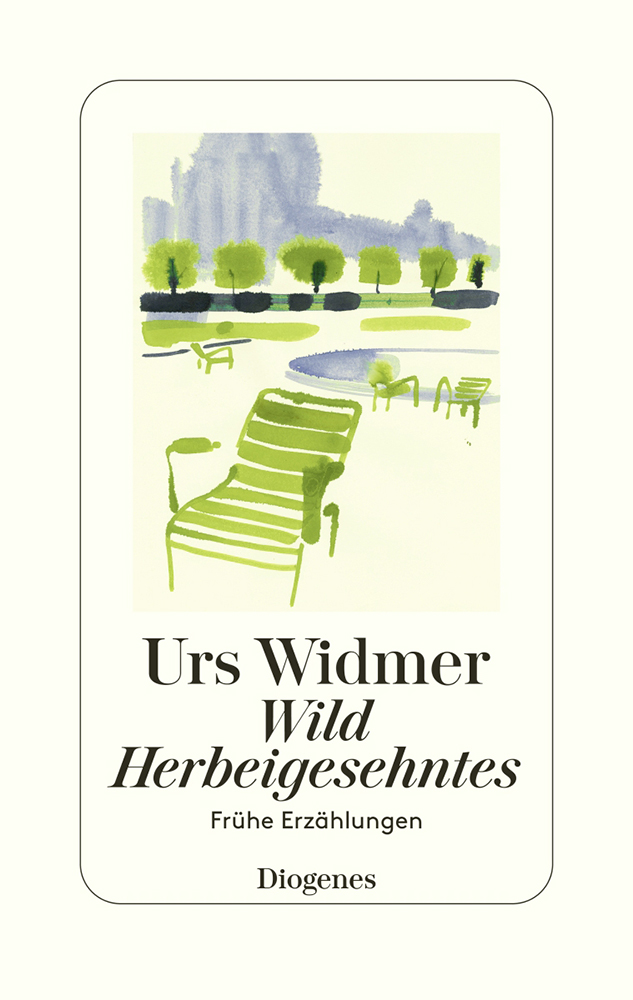
April 2024. An der Kasinostrasse in Hottingen steht ein verwunschenes zweistöckiges Häuschen, umgeben von einem Garten, versteckt hinter einer Hecke. Dort schrieb ein «Zauberer», wie der Tagesanzeiger ihn einmal nannte, seine Geschichten – skurril-komische Erzählungen, immer auf der Schwelle zum Fantastischen –, die Tragisches wundervoll heiter einhüllen.
Zehn Jahre ist es her, seit Zürich und die Literaturwelt diesen bedeutenden Schweizer Schriftsteller verloren haben. Im Jahr vor Urs Widmers Tod fand mit der Autobiographie «Reise an den Rand des Universums» auch sein literarisches Schaffen ein Ende. Jetzt erinnert der Zürcher Diogenes Verlag mit frühen Erzählungen an ihn. Widmer vertraute Diogenes seinen Erstling «Alois» an und blieb dem Verlag bis zuletzt treu. Dieser versammelt in «Wild Herbeigesehntes» frühe Erzählungen, die zwischen 1968 und 1988 bei Diogenes erschienen sind – eine Erinnerung und Hommage an einen der ganz Grossen, zwischen leinengebundenen Buchdeckeln und mit goldgeprägten Lettern auf dem Buchrücken.
Dieses schöne Buch und auch alle anderen Erzählungen, Romane, Essays, Theaterstücke und Hörspiele von Urs Widmer können Sie bei uns ausleihen. Die «Reise an den Rand des Universums» finden Sie zudem in unserer Zürich-Präsenzbibliothek im Lesesaal. Informationen über Urs Widmer, zum Beispiel Nachrufe, haben wir in die Zürcher Bibliographie aufgenommen.
Köbi Robert ermittelt wieder
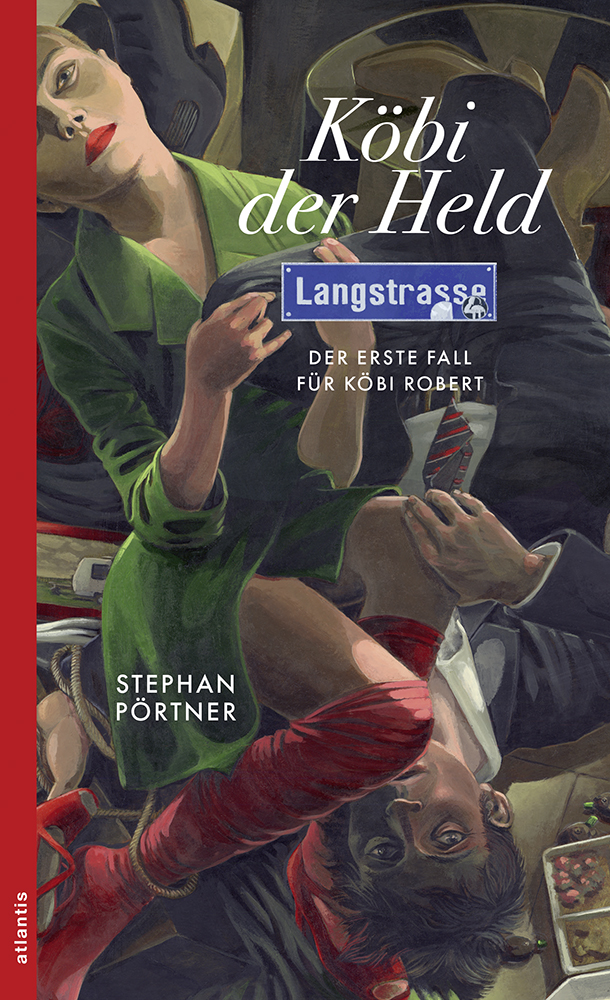
März 2024. Bereits auf den ersten Seiten spürt man den Groove von Köbi Roberts Leben und bald fasst der Protagonist in Worte, was die Leserinnen und Leser längst vermutet haben: «[…] ich wusste ja praktisch alles, was es zu wissen gab auf dieser Welt. Ausser wie man ein geregeltes Leben führte, Erfüllung fand und zu Geld kam.» Und so stolpert «Köbi der Held» dank einem Streifzug durch die Jelmoli-Sportabteilung in seinen ersten Auftrag als Privatermittler.
Der eine oder die andere weiss bereits, wie die Geschichte ausgeht. Denn «Köbi der Held» ist zwar eine Neuerscheinung, aber nicht ganz neu: Die Originalausgabe erschien 1998 im Zürcher Krösus Verlag und Autor Stephan Pörtner liess dem ersten Köbi-Abenteuer bald weitere folgen. Der Atlantis Verlag hat den ersten Fall nun neu herausgegeben, und für alle, die es packt, auch gleich den zweiten und dritten.
In den drei Kriminalromanen schildet Stephan Pörtner das Leben eines liebenswerten Tagediebs, zugleich zeichnet er ein Bild der Stadt Zürich und ihrer Bewohnerinnen und Bewohnern um die Jahrtausendwende. Wer nach den neuen Köbi-Bänden Lust auf mehr hat, findet in unserem Bestand natürlich auch den vierten, fünften und sechsten, erschienen im Zürcher Bilgerverlag.
Hans Grünauer – coming of age im 19. Jahrhundert
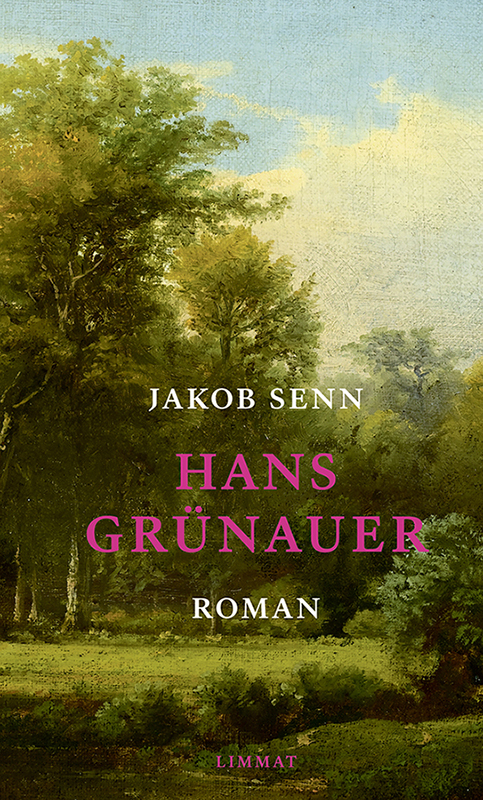
Februar 2024. Das Leben, in das Hans Grünauer hineingeboren wurde, passt ganz und gar nicht zu ihm. Er will lernen, lesen, schreiben. Stattdessen ist nach fünf Schuljahren Schluss und Hans sitzt todunglücklich am Webstuhl. Ab und zu versucht er sich mit dem Leben als Heimweber abzufinden. Nur um sich am Ende doch wieder ein anderes zu erkämpfen.
Mit einer Prise Leichtigkeit und Humor erzählt Jakob Senn im 19. Jahrhundert von diesem Schicksal, das sein eigenes ist. Der autofiktionale Antiheld ist einem auch heute erstaunlich nah. So ist «Hans Grünauer» eine packende Coming-of-Age-Geschichte und im 21. Jahrhundert zugleich ein historischer Roman, der die Lebenswelt der Heimweberinnen und -weber im Zürcher Oberland authentischer nicht darstellen könnte.
Nicht nur uns, auch Gottfried Kellers «Grünem Heinrich» ist Hans Grünauer nah. Kellers Roman diente Jakob Senn als Vorbild und der Nachname Grünauer ist nicht zufällig gewählt. Bei der Erstausgabe von 1888 ging dieser Bezug mit dem Titel «Ein Kind des Volkes – Schweizerisches Lebensbild» verloren. Der Limmat Verlag stellt die Verbindung in der Neuauflage hingegen gleich doppelt her: Mit dem Originaltitel und einem Gottfried-Keller-Gemälde als Coverbild.
Andere Werke von Jakob Senn finden Sie ebenfalls in unserem Bestand, sogar die Zeitschrift «Grüne Wälder». Neben dem Buch wird sein 200. Geburtstags mit einer Ausstellung, einem Theaterstück und einem Film gefeiert.
Die Zürcher Nelkenmeister
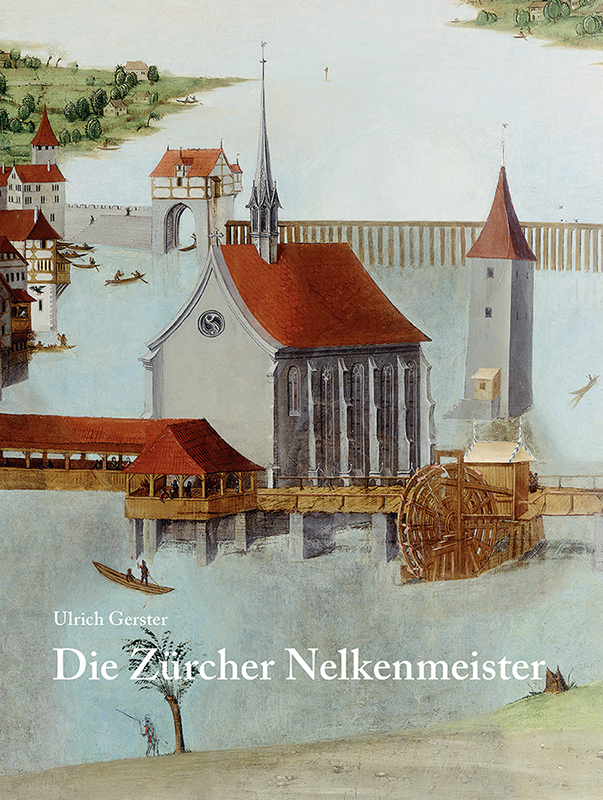
Januar 2024. Zwei Nelken liegen vor einem jungen Mann auf der Erde, eine rote und eine weisse. Beim Jüngling handelt es sich wohl um den Zürcher Stadtheiligen Felix. Mit den zwei Nelken hat der Maler sein Gemälde signiert.
Wer sich hinter diesen zwei Blumen verbirgt, ist nicht klar. Fest steht hingegen, dass er nicht der einzige Künstler war, der statt seines Namens Nelken wählte. In Zürich gab es einen zweiten und einen dritten «Nelkenmeister». Waren sie Mitglieder einer Bruderschaft? Nutzten sie die Nelken als Warenzeichen? Das wird wohl für immer ihr Geheimnis bleiben.
Im Buch «Die Zürcher Nelkenmeister» geht der Kunsthistoriker Ulrich Gerster detailliert auf diese Künstler und ihr Werk ein. Das Einstiegskapitel bettet die Nelkenmeister in das Zürich ihrer Zeit um 1500 ein, ein Werkverzeichnis erlaubt eine Gesamtschau. Zusammen mit zwei älteren Monographien über die Fribourger und die Berner Nelkenmeister bildet das Buch eine umfassende Trilogie über die Nelkenmeister in der Schweiz.
Herausgegeben hat den Band die Gilde der Zürcher Nelkenmeister. Diese Vereinigung entstand in den 1980er-Jahren, als das eingangs erwähnte Nelkenmeister-Bild des jungen Mannes im Kunsthandel auftauchte. Eine eigens dafür einberufene Runde von Zürcher Zünftern ermöglichte schliesslich den Kauf des teuren Werks. Seither besucht diese Gilde der Zürcher Nelkenmeister einmal im Jahr ihr Nelkenmeisterbild im Kunsthaus.


